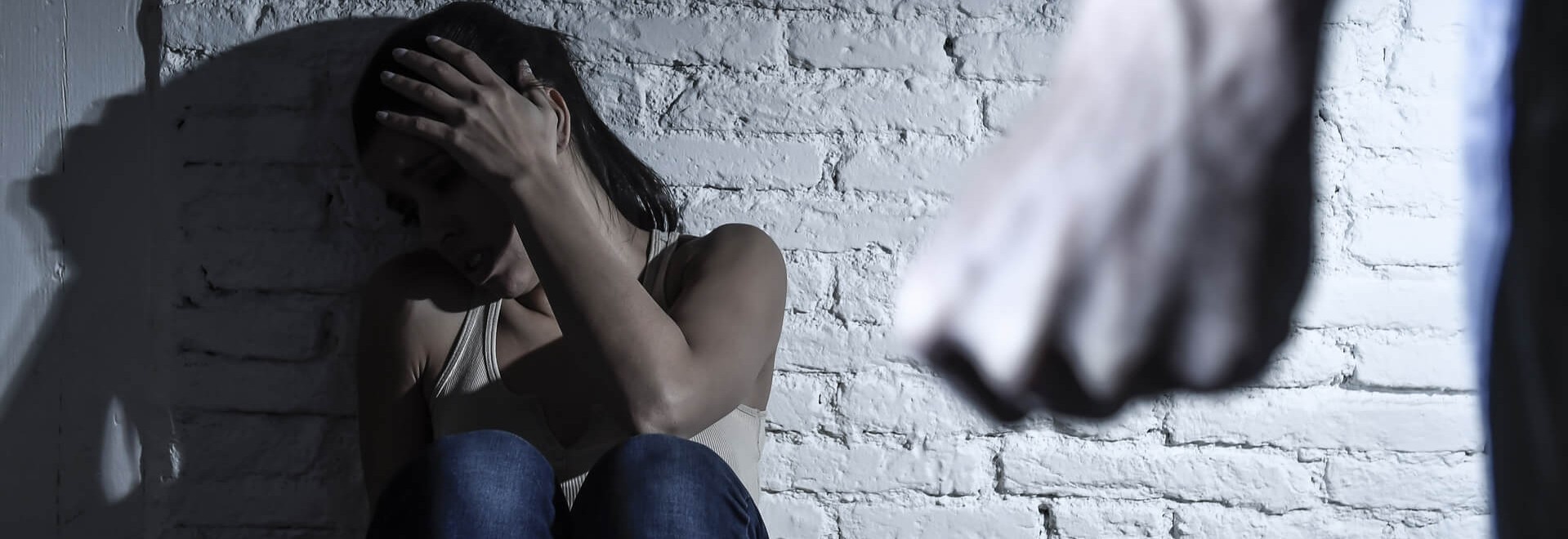Table Of Contents:
What Is Domestic Violence?
Domestic violence is violence committed by someone (partners and ex-partners, family members, family friends and other relatives) in the victim’s domestic circle. Domestic violence is a term used when there is a close relationship between the victim and the offender; in this case, the victim is dependent on the offender. However, domestic violence can take the form of sexual, physical or psychological abuse.
In addition, it is a pattern of behavior used to maintain control and power over an intimate partner or family member.
Restrictions of Domestic Violence
Domestic violence is a serious problem that knows no religious, cultural, racial, or economic boundaries. Victims of any form of domestic violence can be of any age, sexual orientation, gender, race, or marital status and can represent any socio-economic backgrounds and education levels. Although domestic violence is known to affect women, men, children, and elders, it is confirmed that women are the most affected victims with over 1.5 million women assaulted by a partner or loved one each year (David F. Capeless).
Over 1.5 million women are assaulted by a partner or loved one each year.
Types of Abusive Behavior
- Physical and sexual – Hitting, slapping, strangling, kicking, pushing, biting and engaging in sexual acts against someone’s will or forcing someone to have sex
- Emotional abuse – Put-downs, name-calling, making someone feel crazy, guilty, or badly about oneself and blaming them for the abuse
- Threats, intimidation, coercion – Making someone afraid using actions, gestures (glares, showing weapons, abusing pets, smashing things), looks, carry out threats to hurt, threatening to commit suicide, to leave, to report to DCF/immigration/welfare, or pressure to drop criminal charges.
- Isolation – controlling where someone goes, what he or she does, or whom he or she see or talk to, thereby keeping him or her from family or friends, and using jealousy to justify actions.
- Using children - Threatening to take children away, using visitation to harass, criticizing parenting skills, and using children to relay messages.
- Economic - preventing someone from working and having knowledge about family income

Types of Domestic Abuse
There are different types of domestic abuse that perpetrators use against their victims. Most of these abuses may overlap. Types of abuse include physical abuse, emotional abuse, financial abuse, psychological abuse, sexual abuse, image-based abuse, stalking, spiritual abuse, and social abuse.
-
The physical abuse is the use of physical force by the perpetrators against someone. This is usually done in a way that endangers or injures that person. Domestic abuse seldom starts with physical assault and perpetrators are forced to use physical abuse when they have the feeling of being challenged. Examples of which include punching, scalding, stabbing, head-butting, grabbing, choking, throwing, nipping, squeezing, shoving, suffocating, reckless driving, pulling hair, and murder.
-
Emotional and mental abuse is often slight and victims don’t recognize they are being abused in some cases. Emotional abuse will wear victims down over a long period until they take responsibility for their abuser's actions and behavior towards them or they simply accept it. Emotional abuse takes control of the victim’s mental ability.
-
Perpetrators may hurt their victims financially in addition to hurting them emotionally and physically. This financial abuse will make the victims spend their money on the perpetrators. Examples of economic or financial abuse include controlling all the finances and not allowing her to see any bills, bank statements, or any financial transactions and making use of the victim’s money on gambling, trips out, alcohol, treats for himself.
-
Psychological abuse includes emotional, verbal, and mental abuse. The psychological abuse can make use of both verbal and non-verbal communication. The psychological abuse has a deeper and long-lasting impact than physical abuse. Examples of psychological abuse include constant insults, nasty and hurtful sarcasm, shaming and humiliating in public, with put-downs disguised as jokes.
-
The image-based abuse is a non-consensual distribution, threat to distribute, or taking nude, intimate and/or sexual images. It can also be about non-consensual sharing of images, intimate image abuse or revenge porn. The image-based abuse is also known as a technology-facilitated violence. It can include altering the image to feature in another person like cutting one's head into the body part of a porn actor and the resulting image shared without consent.
-
This is a pattern of behavior that makes others feel nervous, harassed, afraid or in danger. This happens when someone repeatedly follows, contacts, talk, send anything or threaten the victim. Some of the stalking behaviors include writing letters, sending gifts, sending email, mail, and pictures and any other actions that harass, track, contact or frighten the victim.
-
This happens when someone is forced to participate in an unsafe, unwanted, or degrading sexual activity. Sexual abuse can also happen with a partner the person is having consensual sex with. Examples of sexual abuse include rape (forced penetration), sexual assault using objects like sex toys, broken glass, bottles etc, sexual assault with vaginal, anal, etc, sexing with objects that hurt, forcing sex in front of others, unwanted fondling among several other illicit and crazy acts.
-
The spiritual abuse is a type of domestic violence that prevents a victim from having own opinions about cultural beliefs, religion, and values. Apart from this, it may also involve controlling the thoughts on spirituality to make one feel powerless. This way, a victim may be forced to believe another religion and culture.
-
The social abuse occurs when someone humiliates or insults a victim in front of other people, controls what one is doing and where they're going or keeps them isolated from family and friends.
What are the Causes of Violent Relationship?
Domestic violence is a choice and it is a learned behavior. There is no real answer as to why someone may decide to abuse his or her spouse or children. This boils down to a desire for the abuser to power and controls his or her spouse or children at the expense of the victim. In this case, they will do anything necessary to grow and maintain that power. Most substance abusers grew up witnessing domestic violence and abuse in their own homes. This way they learn to view emotional and physical violence as valid ways to vent anger and deal with their own self-perception issues and internal fears. What they saw while growing up gets reinforced in the following ways:
- No one has reported them to authorities or stopped them.
- They have established incredible control over others through abuse tactics.
- Using abuse and violence tactics worked to solve problems for them in the past.
Are Abuse Victims One of the Causes of Domestic Violence?
Experts still don’t know the underlying causes of domestic violence but they do know that victim never asks for the causes domestic abuse. The abuser reduces the victim’s self-esteem gradually to gain control over them. They may look for a way to convince the victim that she needs to be provoked or abused in some way, thereby causing the abuser to “lose control.” This way, victims do not cause the abuse because the abuser is in absolute control of his or her behavior.
Possible Triggers of an Abuser
Many experts believe psychopathology, which is developed by growing up in an abusive and violent home cause domestic violence to continue to grow as a generational inheritance. Being abused or witnessing abuse as the norm destroys the child’s ability to trust others and weaken his or her ability to control feelings. This produces dependant, hostile, and emotionally insecure people with a deeply weaken ability to build up and maintain healthy relationships.
It is believed by other experts that genetic predisposition plays a part in the development of an abuser; very few studies have definitive data to support this research. Domestic violence is rampant in cultures where women are placed beneath men in status and personhood.
- Sense of entitlement - A belief they should have power and control over their partner and learned experience that being violent gets them what they want.
- Gender-role identity set up in family - Messages that men should have the power and make decisions in a household and/or intimate relationship (e.g. “a man’s home is his castle”).
- Media - Glorification of violence and violent, coerced, and non-consensual sex; portrayals of women as objects; and limited male and female roles.
- Peer group - Social pressure to conform to a limited definition of masculinity, which centers on bringing down women.
- Sports - Aggression, competition and dominance are praised. Teammates that demonstrate sexist and/or abusive behavior are not held accountable.
- Impunity - Many perpetrators do not face any negative repercussions for their abusive behaviors and sexist attitudes. If they challenge them, their excuses are accepted (an example is blaming the behavior on alcohol use, stress, or being provoked by the victim).

Signs That One Is in Abusive Relationship
Domestic violence and abuse can happen to anyone; however, the problem is often excused, overlooked, or denied and it is true especially in the case of psychological, rather than physical abuse. The first step to ending abuse is to notice and acknowledge the signs of an abusive relationship.
One is in the abusive relationship if:
| Victim | Abusive partner |
|---|---|
| Feel afraid of your partner | Criticizes and humiliates |
| Avoid certain topiсs afraid that they will make a partner angry | Constantly checks up |
| Feel that you do everything wrong for your partner | Ignores or bellitles victim's opinions or achievements |
| Feel guilty for the partner's aggressive behavior | Blames others for their own aggressive behavior |
| Feel embarrassed when friends and family see how a partner treats their victim | Keeps you from communicating with your family and friends |
| Feel that a partner may hurt a victim if they decide to leave | Threatens to do harm to the victim, family or themselves |
| Feel to be treated more like a sex object or a property rather than a personality | Destroys the property or forces to have sex |
Interconnection Between Domestic Violence and Substance Abuse
Does substance abuse really lead to domestic violence? Well, it has been shown by several researches that there is a connection between domestic violence and substance abuse. A drunkard or a drug abuser will always find a way to dissipate his or her anger; which can then lead to domestic violence.
How and why substance abusers are more likely to become a victim of violence
There are two major questions in connection with the relationship of stance abuse to the victimization of women by their domestic partners:
- Do the use of alcohol and drug increase the risk that a woman will be assaulted by her abusive partner? This can be resolved into the addition of substance abuse with domestic violence victimization
- And to what extent is substance abuse a consequence of the victimization of domestic violence?
The research answering the above questions has been published since the mid-l980s and it has provided an evidence that substance abuse is a risk factor for being assaulted by a domestic partner and that it is proved to make substance abusers a victim of violence. The above questions cannot be answered with much confidence yet because the research has been done with fundamental limitations and study findings are inconsistent.
However, drugs and alcohols do tamper with the body system and it alters the thinking ability of the abusers.
Alcohol negatively affects cognitive capability and may result in drinking women exercising poor judgment and placing themselves at risk of violent victimization.
One of the leading risk-factors in domestic abuse is and it was shown by up to 87% of domestic violence program directors that there is an increase in domestic abuse when alcohol or drugs are involved.
Two-thirds of all domestic violence incidents involve alcohol as reported by the National Council on Alcoholism and Drug Dependence.
How and why victims of violence are more likely to start abusing drugs or alcohol
There is growing evidence that victims of violence are at always at the risk of substance abuse among children and women. The best evidence of this relationship is for childhood sexual abuse and the increased rates of alcohol abuse and dependence in adulthood.
There is also an evidence that there is a high probability that women who are victims of violence have alcohol and drug problems. The Sugarman and Hotaling review of 52 studies concluded that substance abuse is a consequence of battering and it does not cause it.
In addition to this, Stark and Flitcraft in the same study concluded that battering and violence seem to be the main cause of female alcoholism. They confirmed that the rate of drug abuse is no higher for abused women prior to victimization and that the risk of drug abuse becomes nine times higher after an abusive episode.
Children are also attacked during the abuse of a loved one. Many of these children get used to these behaviors from childhood and they become abusers in the end. Domestic violence is a learned behavior that is repeatedly passed down from parent to child.
Up to 80% of all child abuse cases are linked with the presence of drugs and/or alcohol.
Data for Domestic Violence and Substance Misuse
While the exact link between spousal violence and the abuse of alcohol and drugs is unclear, the data gathered on the subject shows a considerable association between the two. Some of the statistics as reported the National Intimate Partner and Sexual Violence Survey 2010 Summary Report are listed below:
- Nearly 1 in 71 men (1.4%) and 1 in 5 women (18.3%) have been raped at some time in their lives in the United States and this include attempted forced penetration, completed forced penetration, or alcohol/drug facilitated completed penetration.
- More than half (51.1%) of female rape victims are reported to being raped by an intimate partner and more than half (52.4%) of male victims are reported to being raped by an acquaintance and up to 15.1% by a stranger.
- One in 19 men (5.2%) and one in 6 women (16.2%) in the United States have experienced stalking at some point during their lifetime.
- More than 1 in 4 men (28.5%) and more than 1 in 3 women (35.6%) have experienced rape, stalking, and/or physical violence in the United States by an intimate partner in their lifetime.
- Nearly 1 in 10 (9.4%) women has been raped by an intimate partner in her lifetime in the United States and an estimated 8.0% of men and 16.9% of women have experienced sexual violence apart from rape by an intimate partner.
- About 1 in 7 men (13.8%) and 1 in 4 women (24.3%) have experienced severe physical violence by an intimate partner (this can be slammed against something or hit with a fist or something hard).

How and why substance abusers are more likely to become perpetrators
Criminality and drug abuse have long been linked; this is why drug or substance abusers are more likely to become perpetrators. These criminal acts can range from domestic violence, prostitution, robberies, assaults, rape and driving under the influence of alcohol. Some of these drugs include cannabis and methamphetamine.
Statistics show that majority of alcohol or drug users do not become addicts. However, researchers have suggested that there is a strong link between excess alcohol and drug use and abuser behaviour. This may be because the abuser has decreased social network and decreased perception of social support.
Many abusers are under the influence of drugs and alcohol while committing crimes. Alcohol, however, has the highest relationship with domestic and aggressive crimes.
The empirical evidence of the association between substance abuse and domestic violence is very clear. However, domestic violence offenders are unreasonably likely to have substance abuse problems.
Violence is more controversial with the causal contribution of alcohol and drug use to domestic. It is thereby concluded that substance use contributes to domestic violence in a more conditional and complex way. Other factors that contribute along with alcohol and drugs include situational, social, cognitive and cultural factors.
Factors that contribute both to substance abuse and to domestic violence
Substance abuse and domestic violence do not just happen; there are a lot of factors that do trigger the growth of these two. Anger grows in people with any of these factors and they look for a way to release the anger one of which is domestic abuse. Some of these factors include:
- Prostitution – This can lead to substance abuse and domestic violence as friends will introduce this to the victim. And once she starts abusing drugs, domestic violence (which is a consequence of drug abuse) follows.
- Incarceration – When someone is held in custody of criminals and abusers, he or she will be introduced into drugs.
- Homelessness – A person with no home will always be a victim of drug abuse and domestic violence.
- Mental diseases – Mental disease can lead to drug abuse and domestic violence because the thinking faculty of the person would have been altered. The person will not be able to differentiate what is right from what is wrong.
- Inter-family dependence problems – An abusive family will always influence some or all of the children.
- Social deprivation - Depression and isolation often result in aggression and substance abuse.

Why Don’t Abuse Victims Get Help?
Many women face obstacles when seeking help, which can make it difficult to find a safe end to an abusive relationship.
The common obstacle is that they did not recognize that they were in a domestic abuse because they portrayed their partner’s behavior as ‘normal’ and they find it difficult to know where to turn – this is because most of them don’t really understand domestic abuse.
Another obstacle is that they find it hard to access services, which will help them, maybe due to their immigration status or other issues.
Other obstacles include not knowing who to turn to, not recognizing abuse, social stigmatization, fear of arrest, blaming themselves, no-one stepping in to help, socially isolated, fear of perpetrator’s revenge, deportation or loss of child custody and living in fear.
They fear to make things worse if they talk about it to anyone and their partner found out; they believe this may lead to more violence or abuse.
Fear is the main reason why most abuse victims do not get help – the fear of having anything recorded in their medical records and the fear of other social services getting involved. Women also fear losing custody of their children.
The other widespread reason is the belief that the partner will change when the victim does not realize that ahe or he is now trapped in the cycle of abuse.
Cycle of Abuse
The timeline (which ranges from some hours or days and extends to months) and frequency (which occur once a year or once a week) of the stages of the cycle can vary in every relationship. The cycle of violence in domestic abuse falls into different stages or a common pattern. These stages are listed below:

Stage 1: Abuse
In this stage, an abusive partner comes out and shows his aggressive, belittling, or violent behavior. The stress from everyday life (including stress from work, children, worries, finance among others) begins to mount and increase in the abuser and create tension and pressure. They begin to feel angry towards the victim and they will be feeling as if they should not have met the person.
Stage 2: Guilt
After the abuse stage, an abusive partner feels guilt. Although this guilt is not about what they have done but they will feel bothered about the possibility of being caught in the long run and being allowed to face the consequences for their abusive behavior.
Stage 3: Excuses
In this stage, the abuser rationalizes what they have done. The abuser may come up with different excuses for the fights, physical altercations, and violent outbursts they have caused. They may even blame the victim for the abusive behavior. This way, they are not trying to be responsible for the violence or damages they have caused.
Stage 4: “Normal” behavior
After the excuse stage, the abuser goes into the “normal” behavior stage. In this stage, the abuser will look for all the possible means to regain control and keep the relationship in a perfect working condition. They will try and convince the victim for another chance. However, they exhibit guilt over their previous actions generally and they will promise never to do it again.
Stage 5: Fantasy and planning
The abuser begins to look for a way to abuse again. In this stage, the abuser will start collating all the wrong doings and look for a way to make a victim pay. They will then create a plan to turn the fantasy into the real scene of abuse.
Stage 6: Set-up
After the fantasy and planning stage, the abuser sets a victim up and put their plan in action. This way, they will set a victim up with a situation where they can give good reason for their abuse towards them.
This whole cycle of abuse shows how difficult it is to leave an abusive relationship. The abuser shows many loving gestures between the stages. The apologies will make the fearful feelings die down. They will make a victim understand that things will be different this time and one must be available to help them. They will shower a victim with gifts and show that they truly love them. Meanwhile, the dangers of staying are very real.

Treatment For Substance Abuse and Domestic Violence
To treat substance use disorders among victims of substance abuse or domestic abuse effectively, the health service providers should be sensitive to the needs of these groups. Addressing the underlying cause of substance abuse together with domestic violence often proves to be more successful in rehab that addressing substance abuse alone.
Treatment programs set aside for survivors of sexual and domestic violence can greatly benefit people struggling with addiction and trauma. Victims should look for a treatment facility that offers a safe and supportive environment and that understands the link between domestic violence and substance abuse.
Therapists should address the experiences of their clients early in the recovery process as this will empower victims and encourage them to learn more about healthy coping strategies for past trauma.
A number of government organizations provide resources for victims of sexual and domestic abuse. Abuse victims can call hotlines or visit websites that will show them how to get to the appropriate services.







